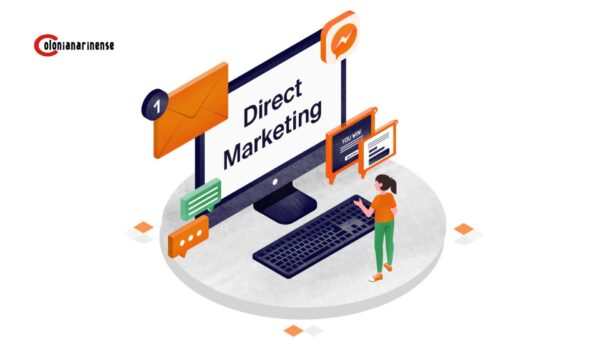Direct Marketing: Advantages and Disadvantages

Direct Marketing
In today’s competitive business landscape, reaching the right customers effectively is essential. Direct marketing is a strategy that offers businesses a way to communicate with potential customers directly, without intermediaries. From email and direct mail to social media and text message campaigns, direct marketing creates personalized, targeted connections that drive engagement and action. But, as with any approach, it comes with both benefits and challenges. Here, we’ll dive into what direct marketing is, explore its advantages, and address some potential downsides.
What is Direct Marketing?
Direct marketing is a personalized approach that lets businesses connect directly with their customers, without going through intermediaries. This strategy can take many forms, including:
- Email Marketing: Companies send targeted emails to promote new products, offer discounts, or simply keep customers engaged.
- Direct Mail: Physical catalogs or flyers sent directly to consumers’ mailboxes.
- Telemarketing: Sales calls that introduce potential customers to new offerings or special deals.
- Text Message Marketing: Quick, real-time messages that inform customers of offers, events, or important updates.
The goal of direct marketing is to inspire customers to take immediate action, like visiting a website, making a purchase, or signing up for a newsletter.
Advantages of Direct Marketing
- Cost-Effectiveness
Direct marketing can be an affordable way to reach customers, especially for small businesses. By eliminating middlemen and using targeted campaigns, companies can reduce advertising costs while maximizing their budget’s impact. - Personal Connection
Direct marketing lets you interact with customers on a personal level. This creates a sense of connection and trust, as you’re able to share specific product details, address customer questions, and get feedback, all of which can help you better tailor your offerings. - Precision Targeting
This approach allows businesses to reach out to specific audiences. By segmenting your customer list, you can deliver tailored messages to different groups, ensuring that your content resonates and leads to higher engagement. - Measurable Results
One of the greatest benefits of direct marketing is the ability to track and measure results. You can see exactly who opened an email, clicked on a link, or made a purchase. This data-driven feedback allows you to refine your strategy and improve campaign effectiveness. - Building Customer Loyalty
Through regular communication, direct marketing helps you build stronger relationships with customers. By personalizing offers and sharing updates, you keep customers engaged and loyal to your brand. - Adaptable Strategy
Direct marketing is flexible, allowing for quick adjustments to campaigns in response to market trends or customer feedback. This adaptability is especially valuable in a fast-changing market. - Full Control Over Messaging
Direct marketing gives businesses complete control over their messages, ensuring that the information customers receive is accurate and aligns with brand goals. Without intermediaries, you’re able to maintain consistency and clarity.
Disadvantages of Direct Marketing
- Message Overload
Consumers today are bombarded with marketing messages through various channels. This constant influx can make it difficult for your message to stand out, and your campaign may end up being ignored or marked as spam. - Regulatory Challenges
Direct marketing is subject to various regulations, such as the CAN-SPAM Act for email marketing and the Telephone Consumer Protection Act for telemarketing. Businesses must comply with these laws to avoid fines and maintain a positive reputation. - Risk of Being Perceived as Intrusive
Some consumers may view unsolicited messages as intrusive. If a direct marketing campaign is too aggressive or poorly timed, it can lead to negative reactions and harm your brand’s reputation. - Building and Maintaining Lists
A successful direct marketing campaign depends on accurate and well-segmented customer lists. Compiling and updating these lists requires time, resources, and ongoing effort to ensure that you’re reaching the right people. - Limited Reach
Direct marketing generally reaches only the audience on your contact list. This limits the potential to attract new customers who are outside your current network, making it necessary to invest in additional marketing efforts to expand your reach.
Conclusion
Direct marketing can be an effective tool to foster customer relationships and drive engagement, but it requires careful planning and thoughtful execution. By understanding both the benefits and challenges, businesses can develop targeted, impactful campaigns that reach the right audience, inspire loyalty, and help achieve long-term success.
FAQs about Direct Marketing
What’s the biggest advantage of direct marketing?
The main advantage is the ability to connect directly with customers, creating a personalized experience that builds trust and loyalty. It’s also cost-effective and allows businesses to measure and adjust campaigns based on real-time feedback.
Is direct marketing suitable for small businesses?
Yes, direct marketing can be highly effective for small businesses. It’s affordable, allows for targeted outreach, and helps build customer relationships, which are essential for growth.
What regulations should I be aware of in direct marketing?
Direct marketing regulations vary by region but include rules like the CAN-SPAM Act (for email) and the Telephone Consumer Protection Act (for telemarketing). Compliance with these regulations is crucial to avoid fines and maintain a positive reputation.
How can businesses avoid being intrusive in direct marketing?
Businesses can avoid intrusiveness by respecting customer preferences, ensuring messages are relevant, and not overloading customers with too many communications. Timing and personalization are also key.
How do you measure the success of direct marketing?
Success can be measured by tracking metrics such as open rates, click-through rates, conversions, and customer feedback. Analyzing this data helps businesses refine their strategies for better results in future campaigns.





